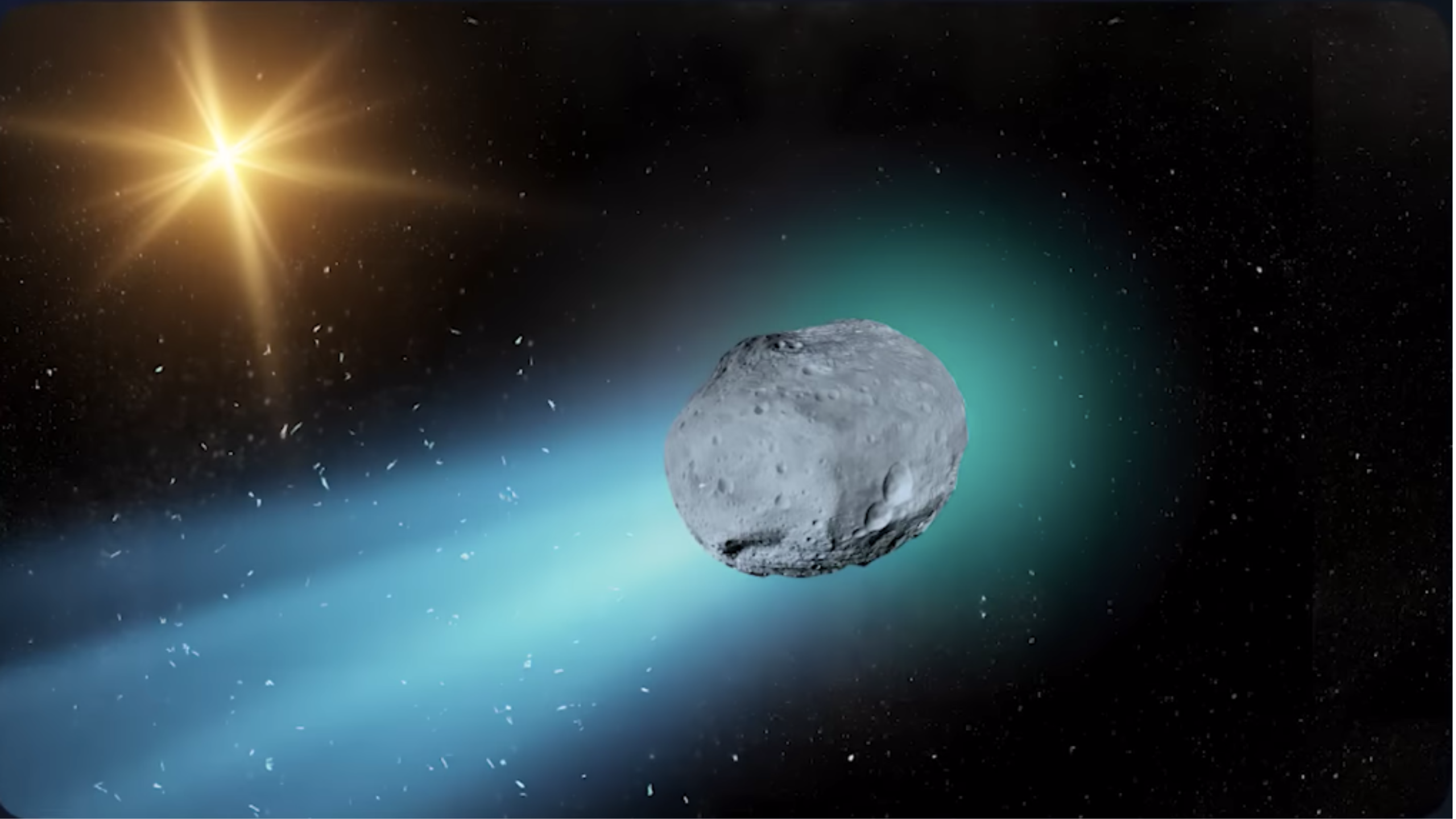Science
Avi Loeb Proposes Antimatter Composition for Interstellar Comet 3I/ATLAS

The scientific community is abuzz following a bold assertion by Harvard astrophysicist Avi Loeb regarding the interstellar comet 3I/ATLAS, also known as C/2025 N1. In a recent essay published on Medium, Loeb suggested that this comet may be composed of antimatter, a substance renowned for its ability to annihilate normal matter and release nearly total energy. This claim has reignited discussions about the nature of this cosmic object, discovered on July 1, 2025, by the Asteroid Terrestrial-impact Last Alert System (ATLAS) in Hawaii.
According to Loeb, if 3I/ATLAS indeed contains antimatter, as he theorizes, its interaction with the solar environment could produce detectable gamma-ray or X-ray emissions. These emissions could potentially be observed by NASA’s Fermi Gamma-Ray Space Telescope. While he emphasized that his theory is largely pedagogical, the implications are significant, suggesting that the comet could represent a form of technological origin rather than a purely natural phenomenon.
Loeb pointed out that the comet’s trajectory is inclined at 175° to the ecliptic, placing it near the plane of the Solar System’s planets. Observations reported by The Economist indicated that 3I/ATLAS appeared “bluer than the Sun” as it approached its closest point to the Sun. Loeb interpreted this unusual hue as potential evidence of internal energy generation, rather than just the reflection of sunlight.
Further, he noted that 3I/ATLAS exhibited non-gravitational acceleration, which could indicate an additional force at play. In an interview referenced by Newsweek, he suggested this behavior might signal an energy source or propulsion mechanism beyond sunlight. His essay elaborates that if the comet consists of antimatter, its annihilation upon contact with particles in the solar environment could explain both its acceleration and luminous characteristics.
Loeb stated, “The mix of matter and antimatter offers the most efficient fuel,” further explaining that the “complete mass-to-energy conversion is unmatched by any chemical or nuclear reaction.” He also mentioned the immense cost and instability of antimatter, noting that producing just one gram would cost approximately $5 quadrillion. This figure underscores the rarity of antimatter in the universe.
Despite the intriguing nature of his hypothesis, mainstream scientists have expressed skepticism. Dr. Samantha Lawler, an astrophysicist at the University of Regina in Canada, remarked that “extraordinary claims require extraordinary evidence,” dismissing the evidence Loeb presented as lacking in extraordinary quality. Additionally, comments from NASA reported by The Guardian confirmed that 3I/ATLAS behaves like a natural comet in all observable aspects, with no credible data indicating an artificial or exotic composition.
Astronomers have pointed out that non-gravitational accelerations are not uncommon among comets; they typically arise when sunlight heats their surfaces, causing gas jets that can slightly alter their course. Cosmologists have also noted that significant concentrations of antimatter in the universe are unlikely, as supported by gamma-ray observations detailed in research published on arXiv. Loeb himself acknowledged that any large antimatter bodies should have been eradicated shortly after the Big Bang.
Despite the skepticism, scientists agree that 3I/ATLAS warrants ongoing observation. Research teams globally are planning to monitor its brightness, tail development, and trajectory to ascertain whether the anomalies cited by Loeb persist or can be explained through more conventional physics.
In a separate post titled “Should We Be Happier if 3I/ATLAS Is a Comet?”, Loeb expressed that even if the object turns out to be entirely natural, it still represents a remarkable aspect of our universe. He concluded, “Nature continues to surprise us without needing aliens or antimatter.” As 3I/ATLAS continues its journey away from the Sun, the debate regarding its composition highlights the vast unknowns surrounding interstellar objects and the extents to which scientists are willing to explore possibilities in the quest for understanding.
-

 Health3 months ago
Health3 months agoNeurologist Warns Excessive Use of Supplements Can Harm Brain
-

 Health3 months ago
Health3 months agoFiona Phillips’ Husband Shares Heartfelt Update on Her Alzheimer’s Journey
-

 Science2 months ago
Science2 months agoBrian Cox Addresses Claims of Alien Probe in 3I/ATLAS Discovery
-

 Science2 months ago
Science2 months agoNASA Investigates Unusual Comet 3I/ATLAS; New Findings Emerge
-

 Science1 month ago
Science1 month agoScientists Examine 3I/ATLAS: Alien Artifact or Cosmic Oddity?
-

 Entertainment5 months ago
Entertainment5 months agoKerry Katona Discusses Future Baby Plans and Brian McFadden’s Wedding
-

 Science1 month ago
Science1 month agoNASA Investigates Speedy Object 3I/ATLAS, Sparking Speculation
-

 Entertainment4 months ago
Entertainment4 months agoEmmerdale Faces Tension as Dylan and April’s Lives Hang in the Balance
-

 World3 months ago
World3 months agoCole Palmer’s Cryptic Message to Kobbie Mainoo Following Loan Talks
-

 Science1 month ago
Science1 month agoNASA Scientists Explore Origins of 3I/ATLAS, a Fast-Moving Visitor
-

 Entertainment2 months ago
Entertainment2 months agoLewis Cope Addresses Accusations of Dance Training Advantage
-

 Entertainment3 months ago
Entertainment3 months agoMajor Cast Changes at Coronation Street: Exits and Returns in 2025









